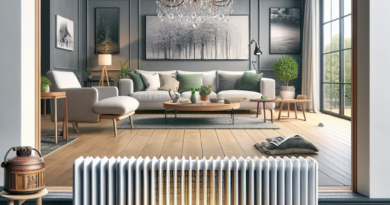How much you save by closing (some) radiators
Radiators are the most used tool in homes for winter heating.
A radiator system connected to a boiler is efficient and convenient, especially for heating the entire home with a single instrument, unlike, for example, an air conditioner system or other instruments that heat only one room.
The radiators can also be connected to the pellet stove or fireplace, allowing you to save significantly on gas costs.
With a single power supply, the wood for the fireplace, the pellets for the stoves, it is possible to heat the room where they are located and the other rooms of the house thanks to the connection to the heating system.
Yet, especially in large houses, there are rooms that are rarely used during the day and heating them is useless as well as a waste of money.
Statistics in hand, turning off radiators located in useless rooms in the system brings a double advantage in terms of efficiency and savings.
Turning off some radiators saves money.
Especially those who live in large houses, keeping all the radiators on can represent a great waste considering that in the end very few rooms are inhabited all day.
Closing some radiators is really useful for saving on the bill and making the system more efficient.
It is possible not to unnecessarily heat the rooms where you spend little time by simply closing the radiators in the empty rooms.
By turning the knob until the circuit is closed, the volume to be heated will decrease, also reducing consumption.
It is estimated that closing off the circuit some radiators in empty or little-frequented rooms can lead to savings of up to 7% on gas consumption.
But in addition to the consumption aspect, closing the radiators in rooms where they are not useful will also allow us to increase the efficiency of the other elements.
This is because the flow of radiators present in little-used rooms will be moved towards the elements present in the most frequented rooms of the house.
In this way we will have much warmer and more efficient radiators.
Therefore not only is the boiler's work easier but it is also possible to reduce energy consumption to a minimum, because closing unused radiators will make the active ones more effective.
Other useful tricks for saving with radiators There are other valid methods to adopt to save on your gas bill.
The first is the control of room temperatures.
It is important to keep the range between 18 and 22 degrees.
Stopping halfway, so 20 degrees is the ideal solution.
This will not only make the home more comfortable but also significantly reduce waste since each additional degree that exceeds this threshold corresponds to an increase of 6% or 7% in the cost of the heating bill.
read also Lower radiators, how much do you save on the bill for each degree less? Also pay attention to the correct maintenance of the boiler and radiators to limit waste.
Very useful for radiators to vent the valve on a regular basis.
This measure will allow you to eliminate air bubbles which often cause malfunctions or annoying noises when the radiator is on.
Simply unscrew the valve on the side of the radiator slightly, allowing a little water to escape.
The boiler must also be subjected to periodic checks to check above all the pressure which must be between 0.8 and 1.5 bar.
Finally, be careful to cover the radiators with clothing so as not to disperse the heat unnecessarily and waste energy.
If we really want to use the heat from the radiators to dry our clothes in winter, we buy a clothes hook to hang on the radiators.
This will allow you to dry your clothes without covering the radiator and thus wasting energy.




